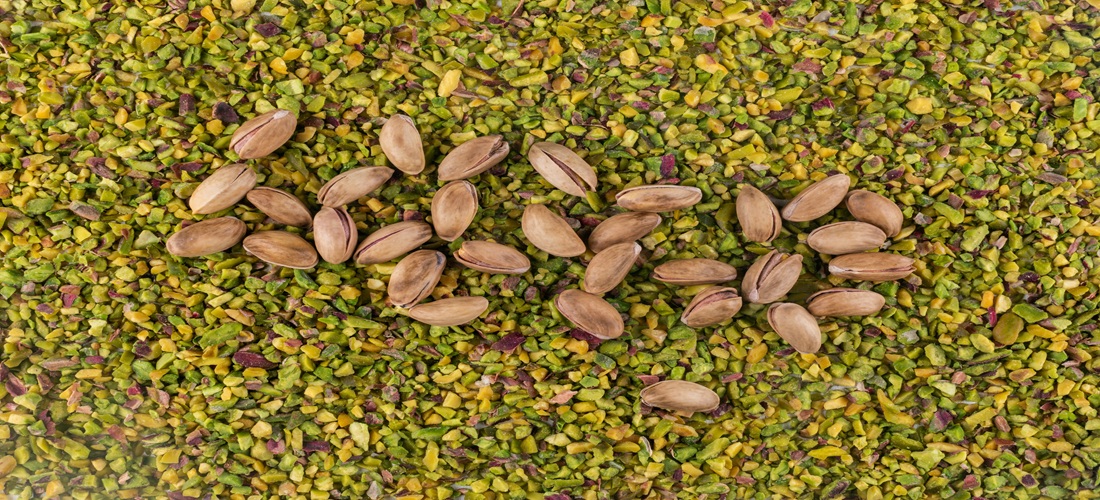
Pistachios everywhere? Consumption grows, imports triple, and Brazil eyes domestic production
Jan, 14, 2025 Posted by Gabriel MalheirosWeek 202503
Once a niche ingredient, pistachios have won over Brazilian consumers, finding their way into desserts like ice creams, cheesecakes, or more unconventional recipes such as stuffed pastries and even the traditional snack pão de queijo. The pistachio craze has gone viral on social media and reshaped the market: imports of the nut have tripled since 2022, jumping from 350 tonnes to 1,000 tonnes in 2024.
Why Isn’t Pistachio Grown in Brazil?
Despite surging demand, 100% of the pistachios available in Brazil are imported. The Brazilian Agricultural Research Corporation (Embrapa) aims to change that, with plans to launch a pilot cultivation project in Ceará by 2027.
In the first half of 2025, Embrapa will present a detailed plan to the Ceará Agriculture and Livestock Federation to begin the “tropicalization” of pistachio crops. Once approved, the federation will seek funding to support the initiative.
U.S.: The Leading Producer and Supplier
Embrapa’s plan includes partnering with the University of California’s Nut Crops Research Center, a global leader in pistachio cultivation. The United States currently accounts for 63% of global production, the result of over a century of research adapting the crop to California’s climate.
Brazil, however, faces a steeper challenge. Gustavo Saavedra, head of Embrapa Agroindústria Tropical, estimates it will take 10 to 15 years to develop pistachio varieties suited to Ceará’s tropical conditions. The process involves navigating bureaucratic hurdles, such as obtaining genetic material from the U.S. and securing its approval from Brazil’s Ministry of Agriculture, as well as agronomic challenges like adapting the plant’s need for cold weather and understanding its flowering cycles.
“If all goes according to plan, Brazil could begin harvesting pistachios between 2035 and 2040,” Saavedra projects.
A Growing Market
The global pistachio boom hasn’t gone unnoticed by international markets. David Maganã, an analyst at Rabobank, highlights that the U.S.’s success in pistachio farming has spurred an export diversification strategy focused on Latin America.
“Brazil has never consumed as much pistachio as it does now,” says Maganã.
Culinary Creativity
Pistachio’s versatility—its ability to shine in both sweet and savory recipes, combined with its vibrant color—has inspired chefs and bakers across Brazil. Alexandre Martins, a food engineer and production manager at the Ofner confectionery chain, notes that pistachio has become a national obsession:
“People are captivated. Pistachio adds sophistication and a visual appeal that elevates recipes.”
Since launching its “Pistachio Festival” in 2024, Ofner has added over ten pistachio-themed items to its menu, including gelato, brigadeiros, and even pistachio-infused pão de queijo. For Easter 2025, the chain is preparing a milk chocolate egg filled with pistachio pieces and crunchy bonbons.
Fast-food chains have also embraced the trend. Arab cuisine fast-food chain Habib’s introduced a pistachio-flavored esfiha, while Bob’s created a pistachio cream dessert reminiscent of a milkshake.
Despite its high price—around R$ 220 per kilo—pistachio has found its place at Brazilian tables, proving that sophistication and creativity can resonate with popular tastes.
Source: O Globo
-
Coffee
May, 27, 2021
0
Coffee prices up 30% in 2021
-
Other Logistics
Oct, 19, 2022
0
VLI launches semi-autonomous operation at Brazil’s Centre-North railway corridor
-
Economy
Jan, 06, 2023
0
U.S. trade deficit shrinks sharply as imports tumble
-
Ports and Terminals
Mar, 19, 2020
0
Brazil’s agribusiness associations seek assurances for port logistics to be maintained

